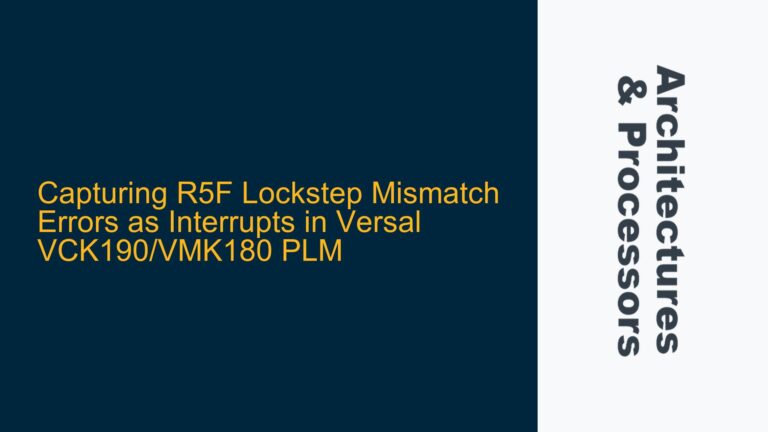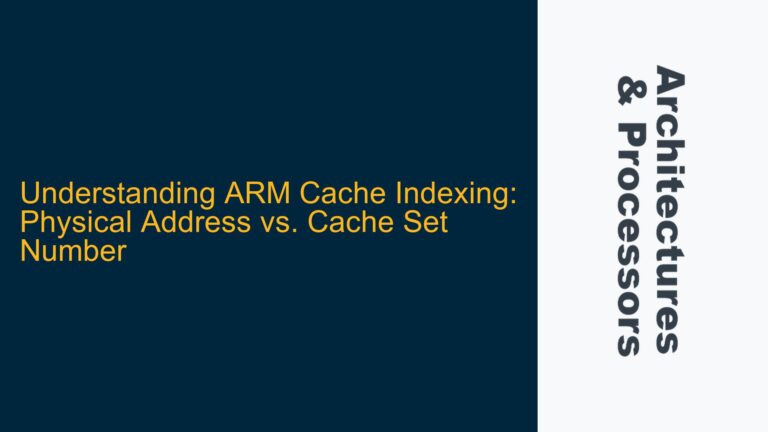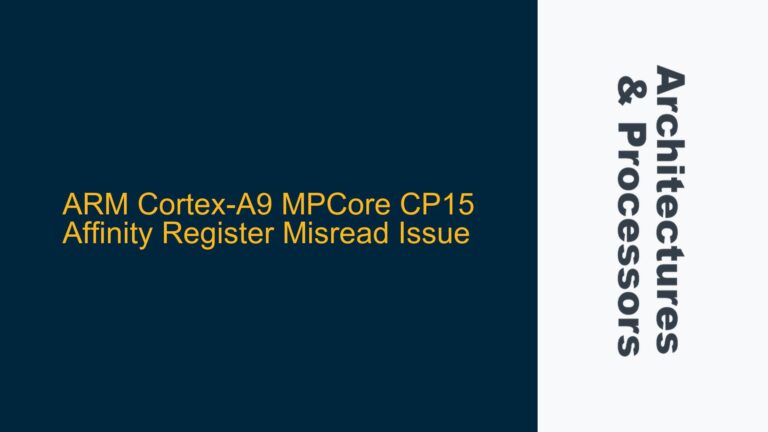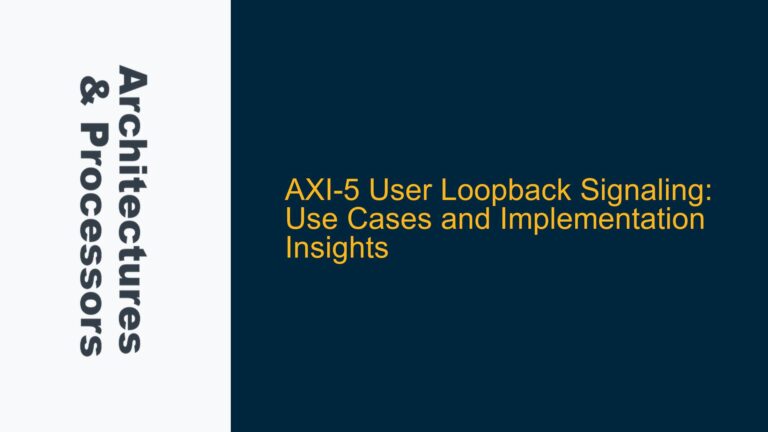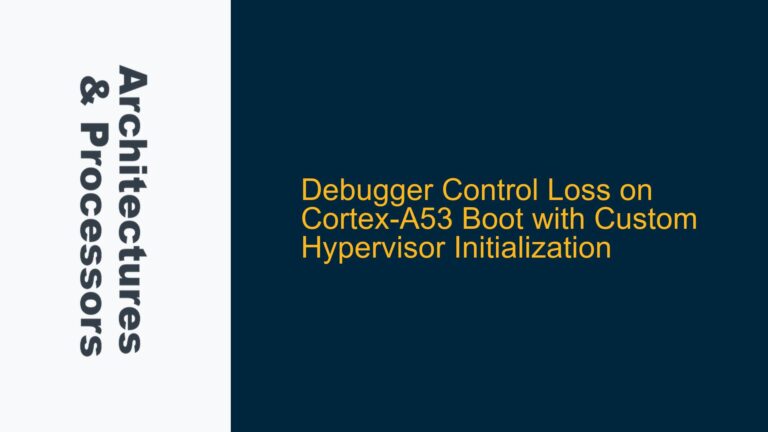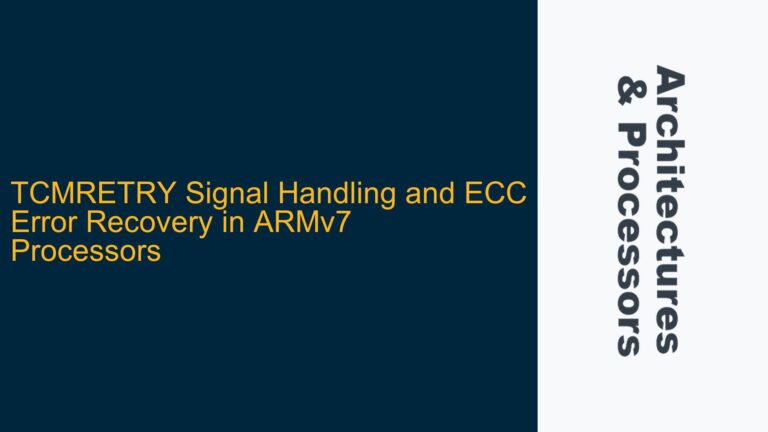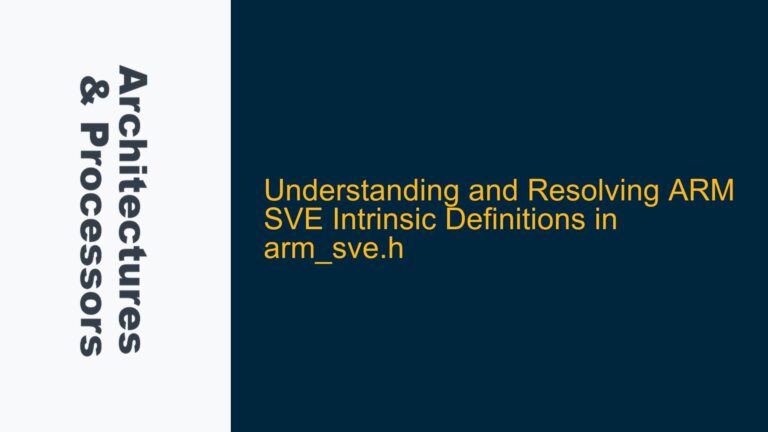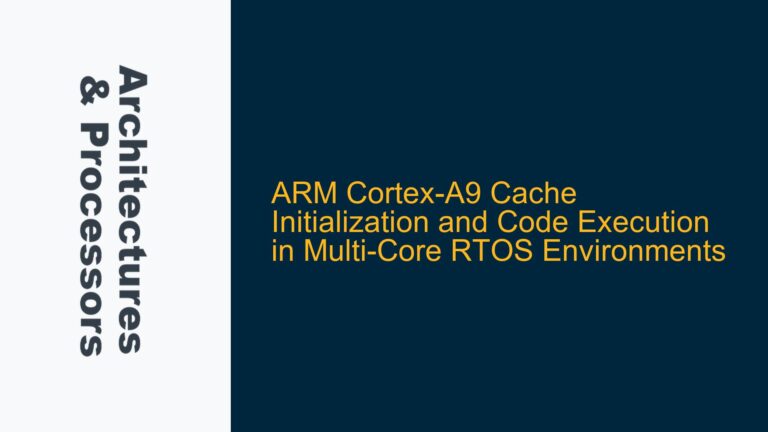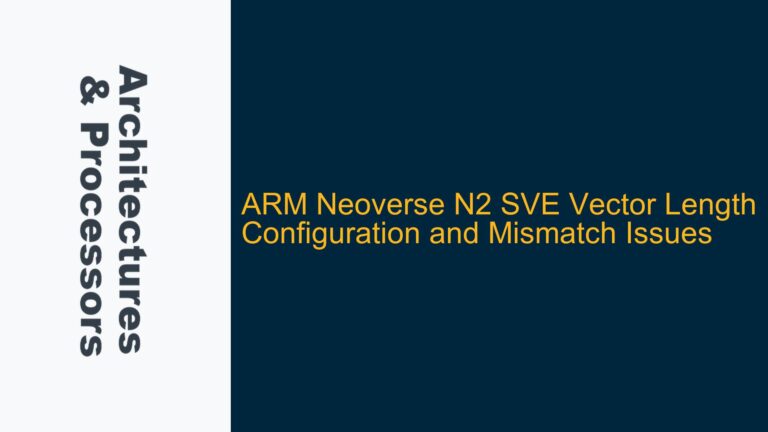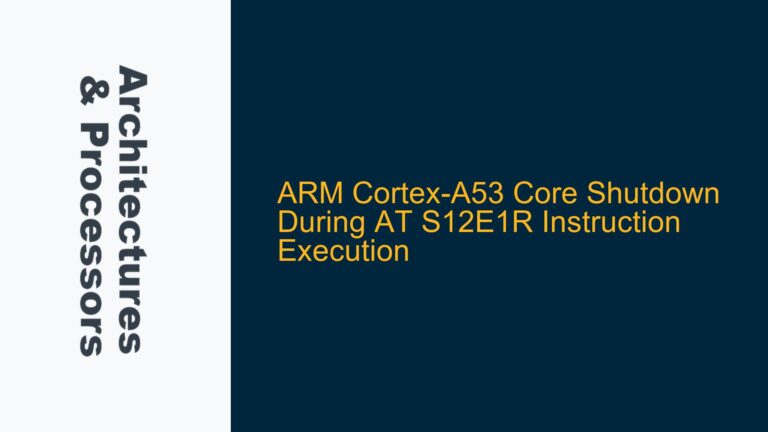Capturing R5F Lockstep Mismatch Errors as Interrupts in Versal VCK190/VMK180 PLM
Understanding R5F Lockstep Mismatch Errors in Versal PLM The Versal VCK190 and VMK180 platforms utilize the ARM Cortex-R5F processor in lockstep configuration to enhance fault tolerance and reliability in safety-critical applications. Lockstep mode involves running two identical Cortex-R5F cores in parallel, with their outputs compared in real-time to detect discrepancies. When a mismatch occurs, it…
